How to Tell a Raven From a Crow
Common ravens and American crows can be quite difficult to distinguish since they look very similar. However, with a little information and some practice, you can learn how to identify them.
5-Minute Crafts created a guide to help you tell these birds apart by showing you their most telling traits.
1. Appearance
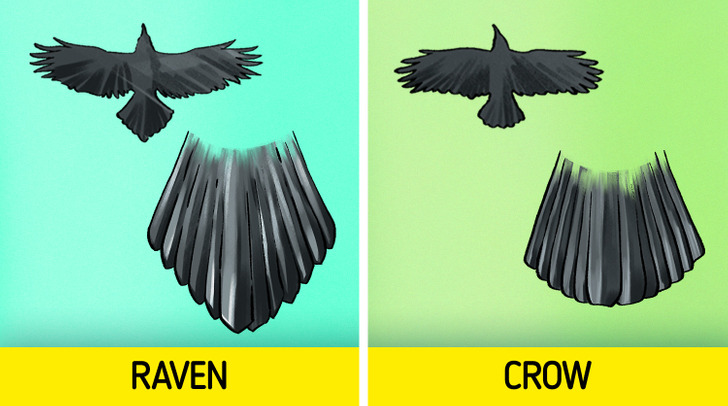
- When you see a common raven flying overhead, it’s usually possible to notice that it has a wedge-shaped tail and pointy wings. They’re completely black and are about 24-27 inches long from head to tail. At the same time, their wingspans go from 3.5 to 4 ft.
- On the other hand, an American crow will have a fan-shaped tail, and less sharp and scattered wingtips. They’re all black and are about 17 inches long, with a wingspan that goes up to 2.5 ft.
💡 When flying, ravens’ wings may produce a prominent “swish” sound, while crows’ wingbeats are generally silent.
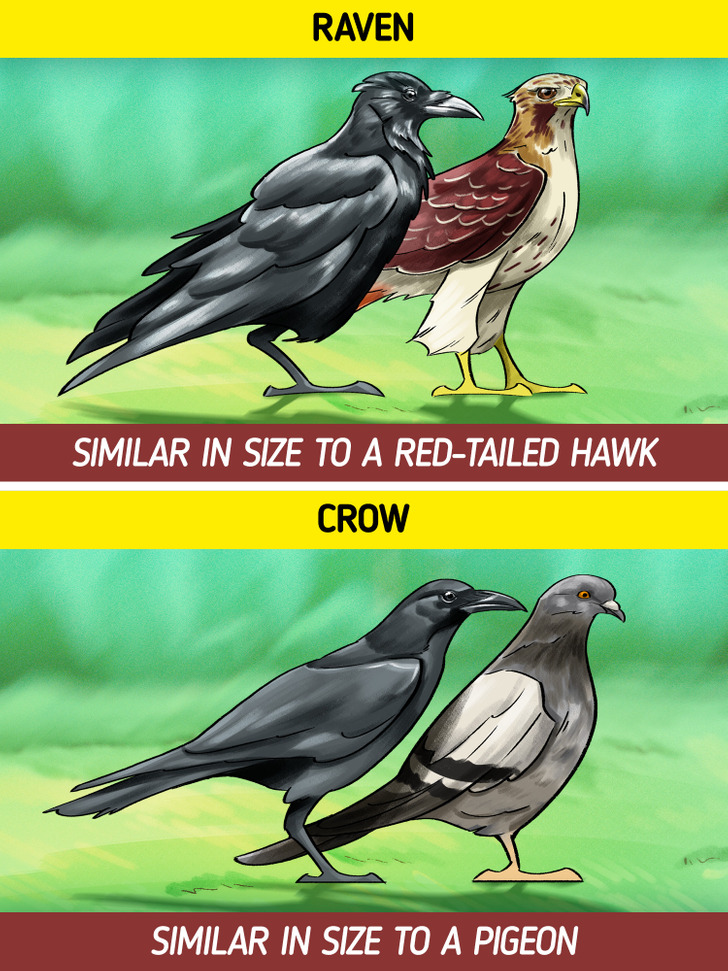
💡 Ravens are bigger and can weigh twice as much as a crow. For instance, ravens are similar to red-tailed hawks in size, while crows are almost the same size as pigeons.
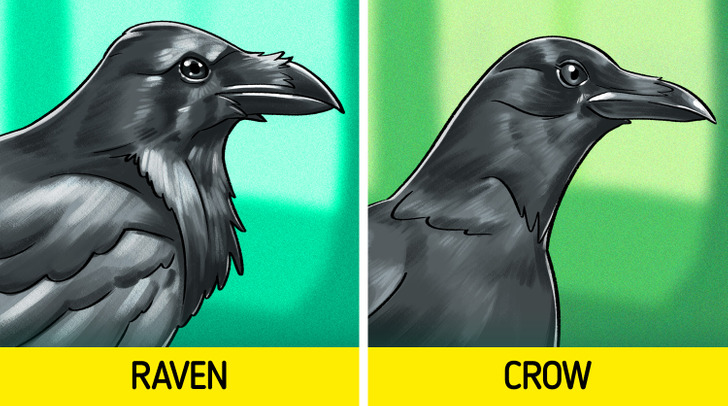
- Ravens have a long, thick, curvy beak. At the same time, they have prominent, well-developed bristles along with a shaggy beard.
- Crows have a thin, straight beak, while their throat feathers are smooth. Their bristles are less-developed and not as thick as the ones on ravens.
💡 Ravens have a glossy plumage that shows iridescent blue, purple, and green shades. At the same time, their feathers may seem oily or wet. Although crows also seemingly have iridescent blue and purple feathers, they have less sheen than ravens.
2. Habitat
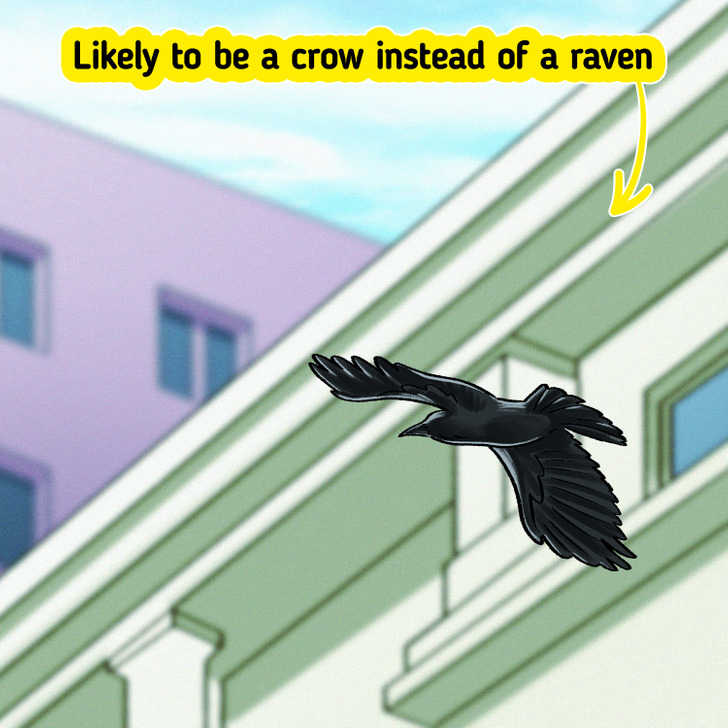
- It’s believed that ravens live in the mountains and usually in more natural areas. For instance, they can be found in forests, grasslands, and agricultural areas in the western regions of the United States. At the same time, these birds can also be found in forests, mountains, and wild places in the Eastern regions of the US.
- On the other hand, crows are highly adaptable to any place, and can be found living in any habitat in the western and eastern regions of the United States. However, these species tend to avoid wild habitats and are common in open areas created by humans, like agricultural land, farms, and recreational places within national parks.
💡 Ravens are rarely seen in populated urban areas, while crows can usually inhabit open habitats close to populated areas. So, if you spot a bird resembling “a big raven” in the city, it’s more likely that it’s a crow rather than a raven.
3. Vocalizations
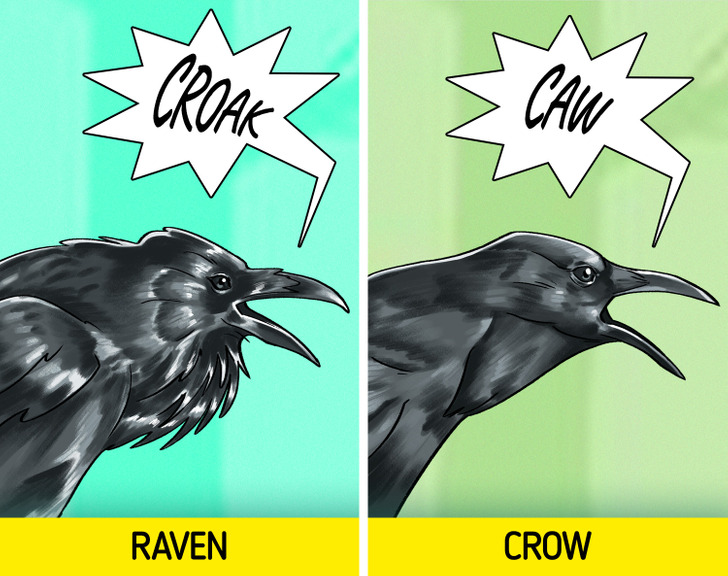
4. Behavior
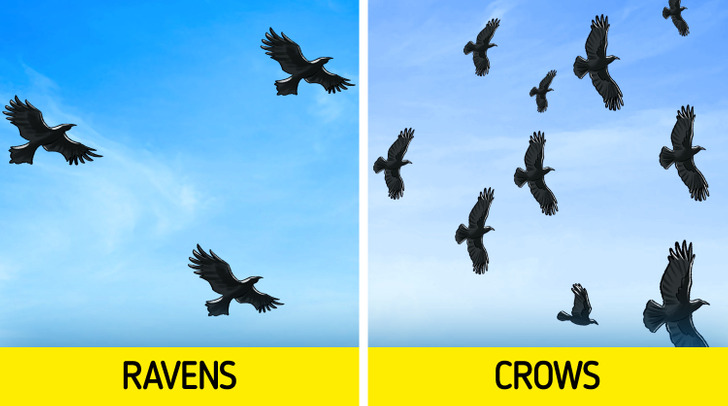
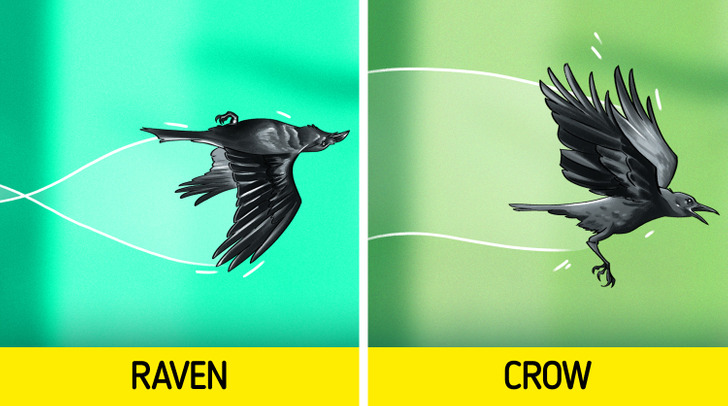
💡 When flying, ravens spend more time soaring than crows. At the same time, ravens barrel roll and fly in an upside-down position. So, if you spot a bird doing these acrobatic movements, it’s very likely that it’s a raven.